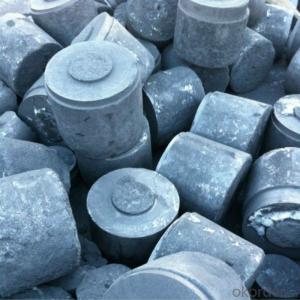Carbon Graphite Electrode RP HD HP UHP Grade
- Loading Port:
- Qingdao
- Payment Terms:
- TT OR LC
- Min Order Qty:
- 10 m.t
- Supply Capability:
- 5000000 m.t/month
OKorder Service Pledge
Quality Product, Order Online Tracking, Timely Delivery
OKorder Financial Service
Credit Rating, Credit Services, Credit Purchasing
You Might Also Like
Specifications:
F.C 98%min and 98.5%min, size: 100mm up
- Description & Application
Electrode block processing of carburant in steelmaking and casting, than ordinary recarburizer absorption rate is high, easy to melt, can efficiently improve the quality of products and reduce the cost.
- Technical Specification
F.C (min) |
| 98% |
S (max) |
| 0.05% |
ASH (max) |
| 1.00% |
Vm (max) |
| 1.00% |
H2O (max) |
| 0.50% |
SIZE |
| |
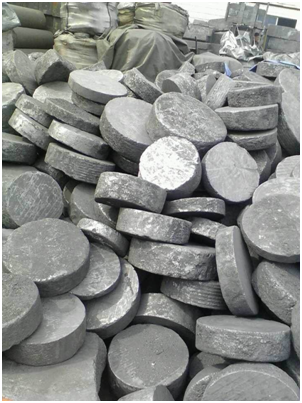
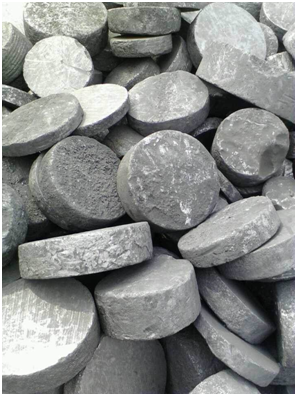
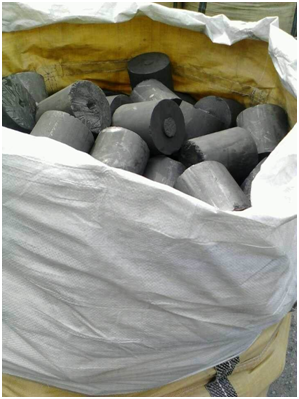
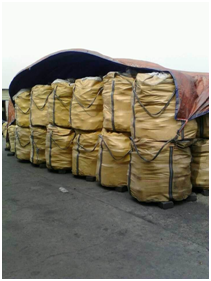
- Q:How does carbon contribute to global warming?
- Carbon contributes to global warming through the greenhouse effect. When carbon dioxide (CO2) and other greenhouse gases are released into the atmosphere through human activities like burning fossil fuels, deforestation, and industrial processes, they trap heat from the sun and prevent it from escaping back into space. This leads to an increase in the Earth's temperature, resulting in global warming and climate change.
- Q:What is carbon coffee fiber?
- The carbon coffee fiber uses the coffee residue left after the coffee and is made into crystal by calcining, then ground into nanometer powder and added to the polyester fiber to produce a functional polyester staple, a coffee carbon fiber. Its main functions are bacteriostasis, deodorization, divergence of negative ions and anti ultraviolet rays.
- Q:What is the role of carbonation in carbonated drinks?
- The role of carbonation in carbonated drinks is to provide the refreshing and effervescent sensation that is characteristic of these beverages. Carbonation is the process of dissolving carbon dioxide gas into a liquid, typically water, under pressure. This results in the formation of carbonic acid, which adds a tangy flavor to the drink. Carbonation serves several purposes in carbonated drinks. Firstly, it enhances the taste by adding a unique bubbly sensation that stimulates the taste buds and gives a refreshing mouthfeel. The effervescence created by the carbonation also contributes to the overall sensory experience of the drink, making it more enjoyable to consume. Furthermore, carbonation acts as a natural preservative in carbonated drinks. The carbon dioxide gas inhibits the growth of bacteria and other microorganisms, thereby extending the shelf life of the beverage. This is particularly important for soft drinks that are often stored for extended periods before consumption. In addition to taste and preservation, carbonation plays a role in the presentation of carbonated drinks. The release of carbon dioxide gas from the liquid creates bubbles and fizz, making the drink visually appealing and enticing. This visual appeal is often associated with a feeling of luxury and indulgence. Overall, carbonation is an essential component of carbonated drinks, providing taste, preservation, and visual appeal. It enhances the sensory experience and contributes to the overall enjoyment of these beverages.
- Q:How does carbon impact the prevalence of ocean acidification?
- Climate change is caused by carbon dioxide, a greenhouse gas. When humans release excess carbon dioxide into the atmosphere through activities like burning fossil fuels, a large portion of it is absorbed by the oceans. This absorption leads to a chemical reaction that increases the amount of hydrogen ions in the water, resulting in a decrease in pH levels. We call this process ocean acidification. When carbon dioxide dissolves in seawater, it creates carbonic acid, which then breaks apart into hydrogen ions and bicarbonate ions. The increased concentration of hydrogen ions reduces the availability of carbonate ions, which are essential for shell-forming organisms such as corals, mollusks, and some plankton species. These organisms rely on carbonate ions to construct and maintain their shells or skeletons. As ocean acidification progresses, the saturation level of calcium carbonate, a crucial mineral for shell production, decreases. This makes it more challenging for marine organisms to build their shells, leading to slower growth rates and weaker structures. Under extreme acidification conditions, some organisms like corals and oysters may even experience the dissolution of their shells. The effects of ocean acidification extend beyond shell-building organisms. It disrupts the delicate balance of various species and their interactions within the marine ecosystem. For instance, the reduced availability of carbonate ions can impact the growth and survival of phytoplankton, which are the foundation of the marine food chain. Consequently, this disruption can have a cascading effect on fish populations and other marine organisms. Additionally, ocean acidification can affect the physiological functions of marine organisms, including their reproduction, behavior, and immune systems. Some studies suggest that acidification can impair the ability of certain fish species to detect predators or navigate, making them more susceptible to predation and decreasing their chances of survival. To summarize, human carbon emissions contribute to ocean acidification. The increased concentration of carbon dioxide in the atmosphere is absorbed by the oceans, leading to lower pH levels and reduced availability of carbonate ions. This process has significant implications for shell-building organisms, the marine food chain, and the overall health and biodiversity of our oceans. It is crucial to address carbon emissions and mitigate climate change to minimize the impacts of ocean acidification and safeguard the well-being of marine ecosystems.
- Q:Is carbon monoxide good for people?
- Carbon monoxide is a common poison, but trace use is good for organ transplants. British researchers have recently developed a new method that can effectively use carbon monoxide to help transplant organs survive, while avoiding the risk of carbon monoxide poisoning.Excessive inhalation of carbon monoxide poisoning will lead to death, carbon monoxide into the human body, and soon the hemoglobin in blood combined with the formation of carboxyhemoglobin, causes red blood cells to reduce the oxygen carrying, the tissue hypoxia in vivo. The cardiac and central biblical system is the most sensitive to hypoxia and the earliest affected. In the air of carbon monoxide concentration reached 117 mg / M 3, people can feel headache, vertigo: up to 292.5 mg / M 3 symptoms; up to 582.5 mg / M 3 will be nausea and vomiting, exhaustion, if not timely rescue can have life risk. When the concentration of carbon monoxide in the air reaches 11700 mg / M 3, a coma occurs; the concentration of carbon monoxide in the air reaches 1170 mg / m. The 3 spoons will soon die.
- Q:Paint paint fluorocarbon paint which expensive?
- After several decades of rapid development, fluorine coating has been widely used in various fields of construction, chemical industry, electrical and electronic industry, machinery industry, aerospace industry, household products. Become the acrylic coating, polyurethane coatings, silicone coatings and other high-performance coatings, the highest overall performance of the coating brand. At present, there are three types of fluoro resin coatings, such as PTFE, PVDF and PEVE, which are widely used.In short, paint is fluorocarbon paint evolved =. = which of the more expensive ones depends on the brand of paint?.Hope the answer helps! ~
- Q:What are the impacts of carbon emissions on the stability of river ecosystems?
- Carbon emissions have significant impacts on the stability of river ecosystems. One of the primary consequences of carbon emissions is the increase in greenhouse gases in the atmosphere, leading to global warming. Rising temperatures have direct and indirect effects on river ecosystems. Firstly, increased temperatures can alter the physical characteristics of rivers and affect the availability of oxygen in the water. Warmer water holds less dissolved oxygen, which can harm aquatic organisms such as fish and invertebrates that rely on oxygen for survival. This decrease in oxygen levels can lead to reduced biodiversity and even fish kills. Secondly, climate change, driven by carbon emissions, can disrupt the natural hydrological cycle. Changes in precipitation patterns can result in droughts or floods, causing fluctuations in river flow. These changes can affect the spawning and migration patterns of many aquatic species, disrupting their life cycles and reducing their populations. Furthermore, altered river flows can also impact the stability of riverbank and riparian habitats, leading to erosion and habitat loss. Additionally, increased carbon emissions contribute to ocean acidification. When carbon dioxide is absorbed by water, it forms carbonic acid, which lowers the pH of the water. Acidic waters can have detrimental effects on aquatic life, including shellfish, corals, and other calcifying organisms. River ecosystems are interconnected with coastal and marine ecosystems, so the impacts of ocean acidification can indirectly affect river ecosystems through the food web. Moreover, carbon emissions contribute to the deposition of air pollutants, such as nitrogen and sulfur compounds, onto land and water bodies. These pollutants can be transported by rainfall into rivers, leading to increased nutrient levels and eutrophication. Excessive nutrients can cause harmful algal blooms, deplete oxygen levels, and create dead zones, further disrupting the balance of river ecosystems. In conclusion, carbon emissions have profound impacts on the stability of river ecosystems. Rising temperatures, altered hydrological cycles, ocean acidification, and increased nutrient levels all contribute to the degradation of these ecosystems. It is crucial to reduce carbon emissions and implement sustainable practices to mitigate these impacts and preserve the health and stability of river ecosystems.
- Q:What are the effects of carbon emissions on the stability of urban infrastructure?
- Urban infrastructure stability is significantly impacted by carbon emissions. The atmosphere is polluted with carbon dioxide and other greenhouse gases from different sources like industrial activities, transportation, and energy production, resulting in climate change. This, in turn, poses numerous challenges to urban infrastructure. Among the primary effects of carbon emissions on urban infrastructure stability is the increased frequency and severity of extreme weather events. Climate change leads to more intense heatwaves, storms, hurricanes, and flooding, causing substantial damage to buildings, roads, bridges, and other infrastructure components. Higher temperatures also cause materials to expand and contract, resulting in structural issues and reduced durability. Additionally, rising sea levels caused by carbon emissions contribute to the melting of polar ice caps, putting coastal cities at risk of flooding and erosion. This threatens critical infrastructure in these areas, such as ports, water treatment facilities, and transportation systems. The stability of urban infrastructure is compromised as sea levels continue to rise. Carbon emissions also impact energy supply and demand, affecting urban infrastructure stability. Climate change leads to extreme weather events that disrupt power grids and energy infrastructure, resulting in blackouts and service disruptions. Moreover, the increased demand for cooling systems due to rising temperatures can strain existing infrastructure and overload the electrical grid. Furthermore, carbon emissions contribute to air pollution, which negatively affects the health and well-being of urban populations. Poor air quality leads to respiratory and cardiovascular diseases, impacting the workforce and productivity. This indirectly affects the stability of urban infrastructure, as a healthy and productive population is crucial for the functioning of cities. To mitigate the effects of carbon emissions on urban infrastructure stability, various measures can be implemented. These include transitioning to renewable energy sources, improving energy efficiency in buildings and transportation, implementing sustainable urban planning strategies, and investing in climate-resilient infrastructure. These actions can reduce carbon emissions and build infrastructure capable of withstanding the challenges posed by climate change, ultimately ensuring the stability and resilience of urban areas.
- Q:What are the different methods of measuring carbon dioxide levels in the atmosphere?
- Some of the different methods of measuring carbon dioxide levels in the atmosphere include: 1) Ground-based stations: These are fixed monitoring stations that collect air samples and measure carbon dioxide concentrations using gas analyzers. 2) Aircraft measurements: Scientists use aircraft equipped with sensors to sample air at different altitudes and locations to gather data on carbon dioxide levels. 3) Satellite observations: Satellites equipped with remote sensing instruments measure the concentration of carbon dioxide in the atmosphere from space. 4) Oceanic measurements: Researchers collect water samples from various depths in the ocean to analyze carbon dioxide levels and understand its absorption by the oceans. 5) Ice core analysis: By drilling and analyzing ice cores from glaciers and ice sheets, scientists can reconstruct carbon dioxide levels over thousands of years. These methods provide complementary data to understand the distribution and changes in carbon dioxide levels in the atmosphere.
- Q:Search for a summary of the importance of carbon in life. If you write well, you can add points,
- People familiar with the organic carbon material more use in daily life and industrial and agricultural production, mainly on gasoline, diesel, kerosene, liquefied gas, natural gas, chemical solvents and fire extinguishing agents such as carbon tetrachloride, carbohydrates (rice, wheat, corn, sorghum, sweet potatoes, potatoes, sugar, fruit, vegetables, paper etc.) chemical fiber, cotton, wood, etc. not all examples.In short, without carbon and its compounds on earth, humans and all living things can not survive and develop, or the earth is a lifeless sphere with only rocks and soil
1. Manufacturer Overview |
|
|---|---|
| Location | |
| Year Established | |
| Annual Output Value | |
| Main Markets | |
| Company Certifications | |
2. Manufacturer Certificates |
|
|---|---|
| a) Certification Name | |
| Range | |
| Reference | |
| Validity Period | |
3. Manufacturer Capability |
|
|---|---|
| a)Trade Capacity | |
| Nearest Port | |
| Export Percentage | |
| No.of Employees in Trade Department | |
| Language Spoken: | |
| b)Factory Information | |
| Factory Size: | |
| No. of Production Lines | |
| Contract Manufacturing | |
| Product Price Range | |
Send your message to us
Carbon Graphite Electrode RP HD HP UHP Grade
- Loading Port:
- Qingdao
- Payment Terms:
- TT OR LC
- Min Order Qty:
- 10 m.t
- Supply Capability:
- 5000000 m.t/month
OKorder Service Pledge
Quality Product, Order Online Tracking, Timely Delivery
OKorder Financial Service
Credit Rating, Credit Services, Credit Purchasing
Similar products
New products
Hot products
Related keywords
